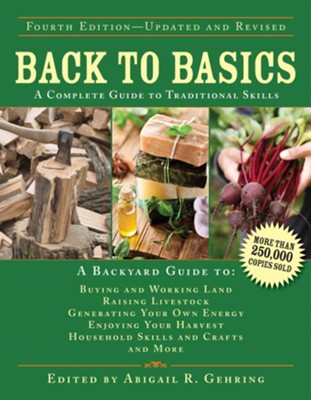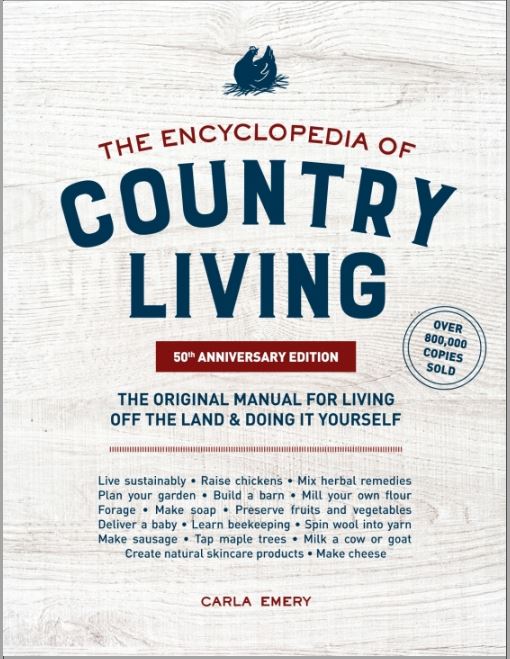Has our agribusiness model broken?
With a full page ad in the New York Times, Tyson Foods warned, “The food supply chain is breaking.” Tyson doesn’t seem to be alone in this sentiment. Many other large food producers have cut back, or shut down completely in the wake of the current pandemic.
What does the future hold for the agricultural model in this country, and is this something we should have seen coming? What can we do to stop it, or at least to live with the consequences of the choices Big Food has forced on our farms and farmers?
David Beasly the director of the UN food agency recently warned that the world could face a famine of Biblical proportions within a few months.
Facing a possible famine with a possibly broken agribusiness model, where do we go from here?
The Soviet Model
A teenage Ukrainian girl boarded the train to Kiev with her mother. They were a well-to-do family with both parents holding government offices. They lived in a small rural city and were going to Kiev to buy necessities that were not available locally. They carried with them the equivalent of several hundred dollars in order to stock up while they were in the capital.
This teen girl, now a US citizen, told me what she saw when they entered the largest market in Kiev. Bare shelves! Row after row of them. She told me that there were a few loaves of bread, some fish and poultry in the meat section and very few fruits and vegetables.
This family was rich compared to their neighbors, but was unable to buy much with all that cash because it simply wasn’t available.
This was Soviet era Ukraine with all the wonders of collective farming. The Soviets had highly mechanized production but were forced to sell all the food produced to the government. I know that is a very simplified version of how the system worked, but it is fairly accurate.
All across the USSR, the government had its hands in the production of the peoples’ food. Mandated inefficiencies by Stalin were somewhat alleviated by subsequent leaders, but the system was still far from efficient. Add into that a few years of bad crop production, and the usual corruption and you had a recipe for the famines that helped bring down the Soviets.
American Farmers
American farmers aren’t anything like the old Soviets, you say. True. But I will say the system that American farmers are forced into has all the hallmarks of one that will collapse upon itself, given the right (wrong?) set of circumstances.
Instead of selling what they produce to people, the farmers sell to a cooperative (collective?). Most of what farmers grow is then fed to animals. Then these animals are put into a pipeline of processors, and then distributors, and finally to groceries where people can buy the product several times removed.
The Government makes sure it stays involved with the whole process by passing laws that make it illegal for a farmer to sell milk, eggs, meat, cheese, along with several other products directly to the consumer. For sure there are small communities of people who ignore these laws and buy directly from those willing to take the chance and sell directly to them.
The American farmer is now, for the most part, just a cog in the American agribusiness corporate model. And similar to how the Soviet model came apart, we are seeing something that could break down agribusiness in the coming months.
Meat Producers
I mentioned Tyson at the beginning of this piece. However, there are more, many more who are following suit. The animals have been raised and are ready to be processed (butchered and moved on), but the meat packing plants are closed, so many of these animals are just being killed so that they no longer have to be fed.
If the pipeline of animals has been stopped, then there is no reason to start raising new replacement animals. Tyson holds contracts with poultry growers all around, near their processing plants. These contracts stipulate how many and how fast the birds must be raised. If no birds are being processed, then no new birds are being started. No grain is being purchased for food, and everything grinds to a halt.
Many of these producers live contract to contract and carry a mountain of debt. A stoppage in the pipeline of animals has the possibility of finishing many of them.
Egg Producers
Egg producers are in a similar boat. Eggs are being given away all across the country. Thousands of dozens, all because there is no restaurant market for them at this time. At least these birds don’t have to be killed to produce. But food still needs to be purchased in order to keep them alive during this time.
Eggs might be the go-to source of protein for many who are not able to locate meat for sale. Government restriction on selling eggs is less restrictive than on selling meat, so some egg producers may survive an agribusiness crash.
Milk Producers
Milk producers have been living on government subsidies for years. Recent milk prices have just stayed at rock bottom, far less than the cost to produce. Many dairy farmers across the country are being forced to dump part of each day’s production of milk since school and restaurant orders have dried up.
Grain Farmers
As I said earlier, most of the grain grown in this country goes into feeding animals. Grain farmers are going to plant this spring no matter what happens, so there will be a fall crop. What that crop is worth when harvest comes is a matter of speculation.
Grain farmers can sell to the public, but why should they, and who would buy it? Monocrop farming relies on a system like we have in place, where all the surpluses can be shipped around and used far away from where it was produced.
What do we do?
That is the big question begging for an answer. If the system fails, cities may end up like Kiev, with no food on the shelves. Do you remember what happened to the toilet paper?
American agribusiness is not set up for a disruption in the flow of goods like we have shaping up. It teeters, facing a collapse that, if we don’t prepare for it, we may see far worse things than we have seen from this pandemic.
There is a way people can take charge of their own food security, and face this possible crisis head-on with confidence. It started back in the 60’s, and is enjoying a modern renaissance of sorts.
Back to the Land
The Back to the Land movement had people leaving the cities, buying a plot of land, and growing their own food so that they knew what was in it and that it was humanely produced. There are many excellent books in publication that tell you just how to do this, and most of the information is still accurate. A person can buy a plot of land and humanely produce most of their own food without buying into the agribusiness model.
If that is not an option for you, the current iterations of this movement are homesteaders and off-gridders. There is much overlap in these movements, but the main thing seems to be self-sufficiency.
Homesteaders
Modern homesteading looks much like regular farming did 100+ years ago. A small family farm that has a biodiverse selection of crops and animals provides a well balanced land usage along with increased fertility and production. This allows the homesteader to produce a healthy food supply, and in many cases a marketable crop.
Government Reform
If American agribusiness is truly broken, the best thing the government can do is to loosen the restrictions it has placed on small producers like homesteaders. You should be able to go to your local farmer and buy milk. You should be able to buy meat right from the farmer. Lifting these restrictions will help Americans.
The current trend of trying to eat locally will expand many times, with the result being Americans having access to more locally grown, healthy food than ever before. We will have to be willing to spend more of our budget on food, realizing the artificially low prices we enjoy now is a construct of a greedy middleman system with very little to do with supply and demand.
The current news keeps saying things will be different when we emerge from this pandemic. Let’s hope that we can take our current agricultural system and turn it into a healthy one that will help small American farmers and homesteaders instead of rich middlemen.
Sources:
https://www.cbsnews.com/news/coronavirus-famines-united-nations-warning/
https://www.businessinsider.com/tyson-millions-of-pounds-of-meat-will-disappear-coronavirus-2020-4
https://www.cbsnews.com/news/dairy-farmers-hit-hard-by-coronavirus-are-spilling-a-lot-of-milk/
Original Post:





